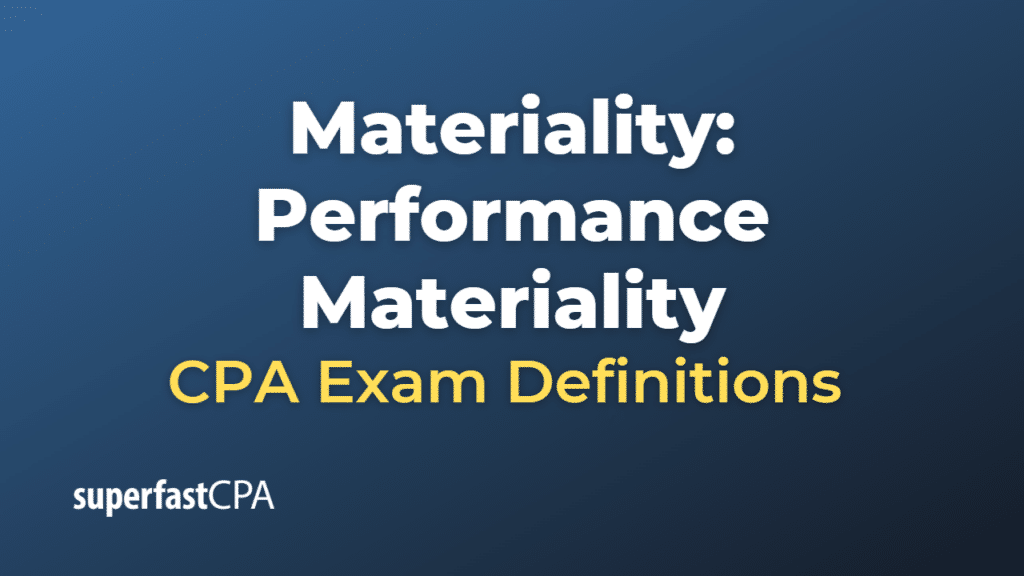Materiality: Performance Materiality
Performance materiality, also referred to as tolerable misstatement, is a concept used in financial statement audits. It represents the maximum amount of misstatement or error in a specific account balance, class of transactions, or disclosure that an auditor is willing to accept without considering the financial statements to be materially misstated. Performance materiality is derived from the overall materiality threshold calculated for the financial statements as a whole and is usually set at a lower level.
Performance materiality serves several purposes in a financial statement audit:
- Planning and performing audit procedures: Performance materiality helps auditors plan the nature, timing, and extent of audit procedures. By setting a threshold for specific areas, auditors can design and perform audit procedures that are responsive to the risk of material misstatement associated with each account balance, class of transactions, or disclosure.
- Assessing the risk of material misstatement: Performance materiality helps auditors assess the risk of material misstatement by providing a benchmark against which identified misstatements can be evaluated. If the aggregate misstatements identified for a specific area exceed the performance materiality, auditors may conclude that there is a higher risk of material misstatement in the financial statements.
- Allocating audit resources: Performance materiality helps auditors allocate audit resources more effectively by guiding their focus to areas with higher risks of material misstatement or those that are more significant to the financial statements.
- Evaluating audit findings: Performance materiality is used to evaluate identified misstatements and determine whether they are material, either individually or in aggregate, to the financial statements. If misstatements exceed the performance materiality for a specific area, auditors may need to perform additional audit procedures or propose adjustments to the financial statements.
It is essential for auditors to exercise professional judgment when determining performance materiality levels for each account balance, class of transactions, or disclosure. This judgment should consider the overall materiality threshold, the assessed risks of material misstatement, and the specific circumstances of the entity being audited.













